SARA SADAWI
Ducts
2020
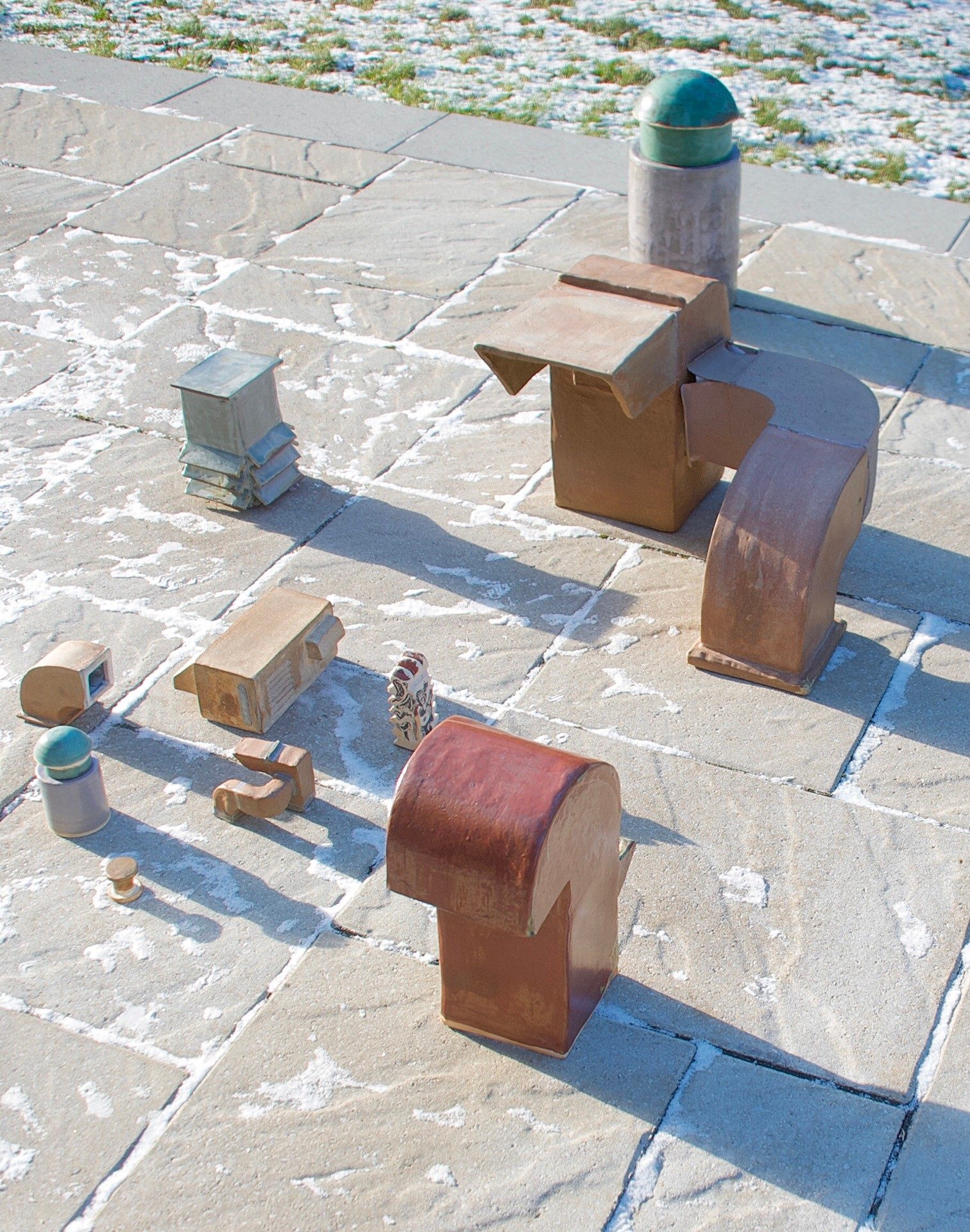
Ceramic (porcelain, stoneware, glaze, cardboard), 6' X 3' X 2'
Artist statement
Ducts is an exploration of ventilation systems and ducts. I aim to challenge the patriarchal ideologies that favour male over female performance in craftwork. Using clay, a material typically associated with craft and historically regarded as a woman’s job or hobby, I create a contrast by using a rich and delicate material to portray industrial objects that exist in a male-dominated world. This piece attempts to force a link between two worlds that do not organically connect and highlights how they have become background noise, despite their importance in our daily lives.
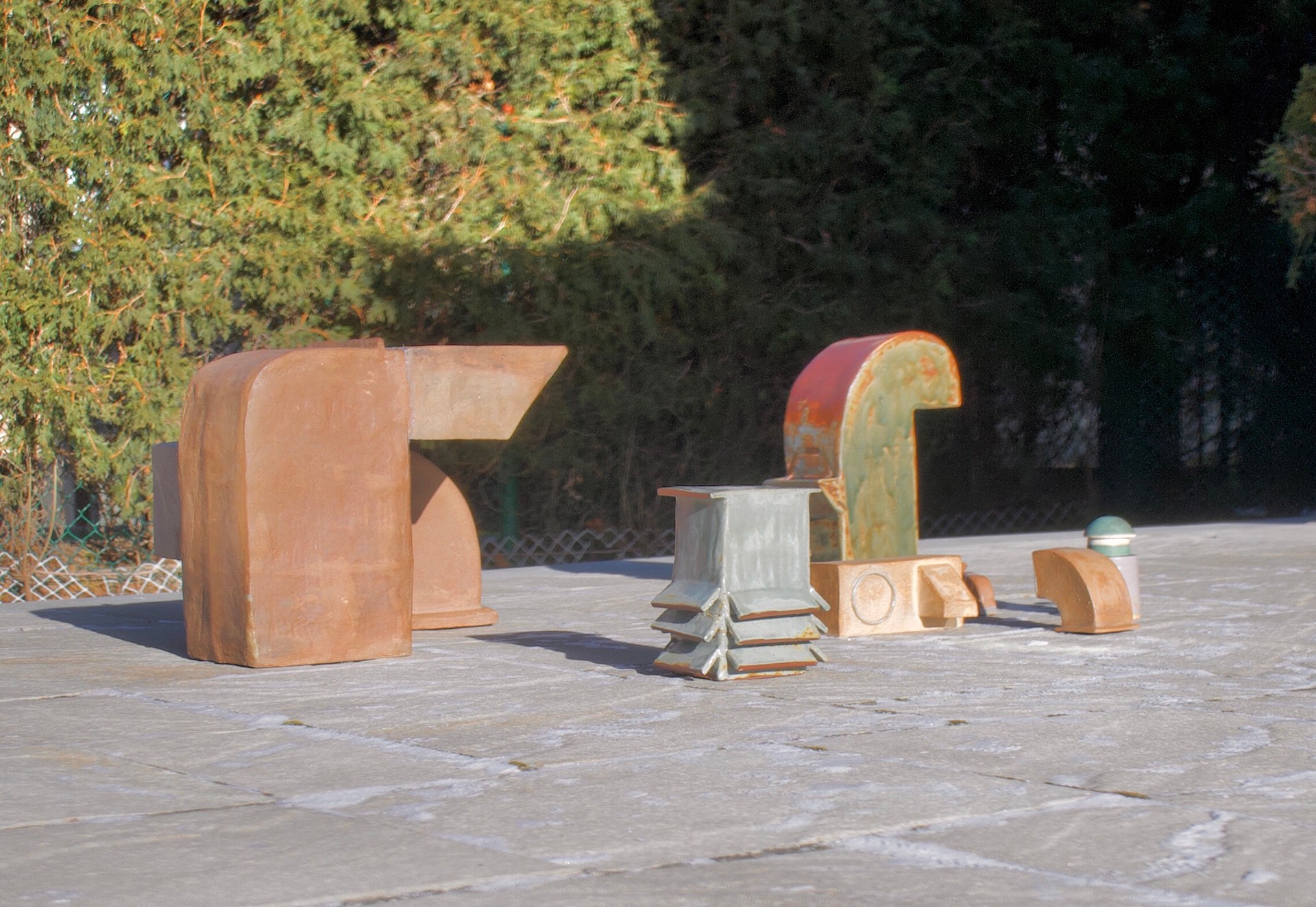
Artist’s biography
Sara Sadawi is a multidisciplinary Syrian artist based in Montreal, Quebec. She grew up surrounded by artists, which led to an early interest in material explorations and an interest in utilitarian objects and abstract/non-functional work. She studied Visual Arts at John Abbott College, where she was awarded the Visual Arts Department Certificate of Merit — the Faculty Award for the strongest work in the graduation exhibition. She was also awarded the Departmental Award for her academic achievement and excellence. She received her BFA at Concordia University in 2020.
 Photo by Guy L'Heureux
Photo by Guy L'Heureux
Essay
Unexpected Infrastructures of Care in the Industrial Environment
Author Madison Strizic
Artist Sara Sadawi
Artwork Ducts, 2020
In Sara Sadawi’s ceramic sculptures, modernity’s tell-tale clean, geometric lines and no-frills design are captured in each of the carefully handcrafted clay forms that make up her installation Ducts. Often sequestered to the roof tops and back alleys of buildings, these congruous shapes glazed in earthen hues and slate greys may not be immediately recognizable as part of our everyday environment. However, as the title suggests, these sculptures depict the exhaust pipes, in-take vents, and air ducts that make up the respiratory systems of our contemporary landscape. Through the modeling of clay, Sadawi forges a connection between the perceived masculine world of tireless, mechanized production and feminine, hand-crafted work, building towards a broader discussion about labour, hierarchies of practice, and gendered spaces.
Sadawi references the purity of form and clean design from the rapid industrialization and technological innovations that influenced Modernism at the turn of the 20th century. Ushering in a new social order that organized space and labour around strict divisions and parameters of gender, race, and class, the same force that sent men into the industrializing public sphere for work, consigned women to the private realm of domesticity and its maintenance.1 Like other facets of industrial architecture, the artist’s work harkens back to an era that sought to further anchor a patriarchal social order. However, the initially masculine reading of the work is complicated by the very objects she has chosen to depict: air ducts.
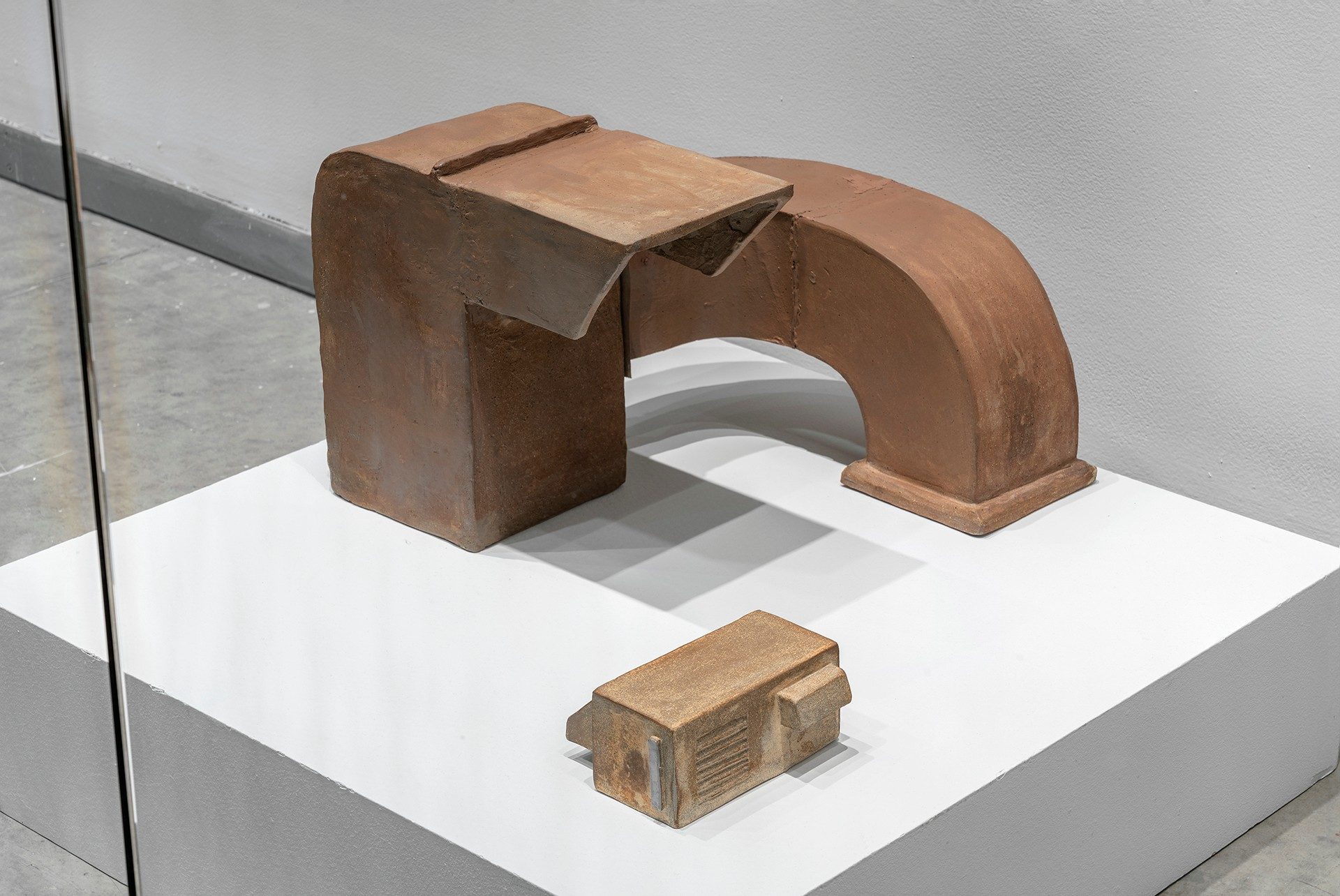
Photo by Guy L'Heureux
These fragments of industrial ventilation belong to a system whose main function is not to produce, but to maintain.

Photo by Guy L'Heureux
These fragments of industrial ventilation belong to a system whose main function is not to produce, but to maintain. Pushed for by women-lead health reform movements in the early 20th century, modern ventilation systems were introduced to industrial spaces — and eventually domestic ones — to improve the working conditions for those inside. They reflect the vast, hidden networks of care often tucked behind drywall or cloistered to ceilings, and, not unlike other forms of maintenance, their ubiquitous nature tends to render them invisible in our everyday environment.
The artist’s choice to depict these facets of our modern ventilation systems in clay points to another realm of unseen, gendered labour in our everyday environment. As Sadawi mentions in her statement, the art historical canon has typically relegated ceramics to the realm of craft, hobby, or decoration due to its relationship with the practical and decorative aspects of domesticity.2
In her lecture “The Aesthetics of Care” scholar and artist Ara Osterweil talks about the fragmentary tradition of feminist aesthetics and its relation to the machinations of daily life: the laundry list; the diary; the letter; and the collage. Often excluded and criticized for their superficiality, Osterweil notes that these gendered and social practices are sites of great depth and sustained care.3 In this way, Ducts, as a collection of hand-crafted ceramics, can be read as a gesture toward these feminized forms of labour that have been historically undervalued due to their association with the upkeep of daily life. In the context of ceramics and other craft practices, their place within the domestic landscape and their practical uses in the home have likewise pushed their presence into the periphery.
Sadawi’s installation complicates the monolithic and masculine narrative of industrial spaces by signalling the overlooked infrastructures of maintenance and care in our built environment. Blurring the boundary between public and private, and the nature of the work that occurs in each realm, the artist creates a body of sculptures that asks us to reconsider our everyday surroundings and the forgotten labour that occurs within them — what the artist puts so poetically in her statement as the “background noise” of our day-to-day lives.
- Moira Vincentelli, “The Decorative Woman,” in Women and Ceramics: Gendered Vessels (Manchester: Manchester University Press, 2000), 78.
- Sara Sadawi, artist statement, 2021.
- Ara Osterweil (Lecture, University of Toronto, The Center for Ethics, April 7, 2021).
Author’s biography
Madison Strizic is an artist and student currently pursuing a Bachelor of Fine Arts in Fibre and Material Practices at Concordia University. She is interested in the aesthetics of the everyday, urban exploration, the effects of deindustrialization, and will talk your ear off about Mansard roofs if given the opportunity.
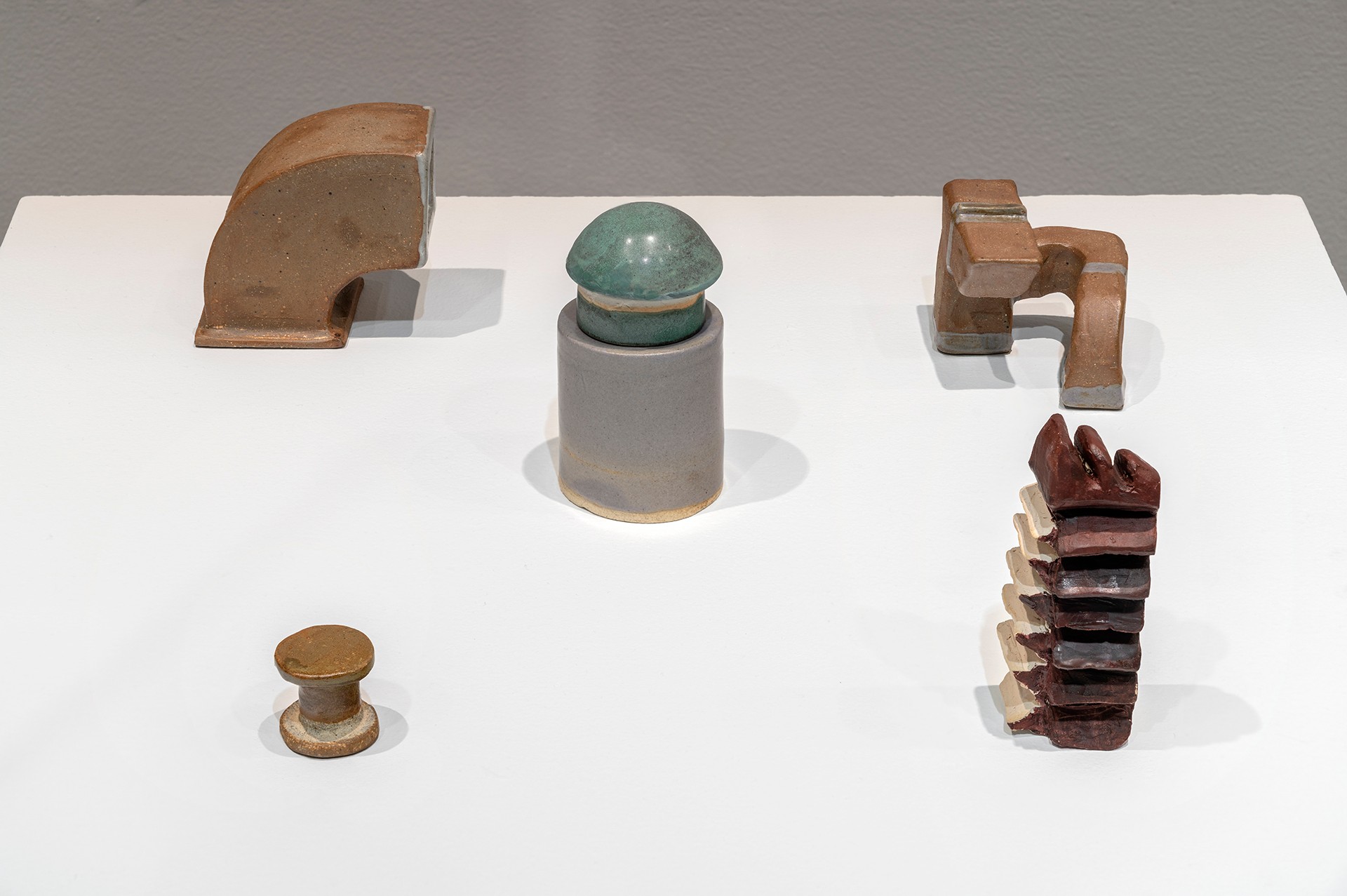 Photo by Guy L'Heureux
Photo by Guy L'Heureux
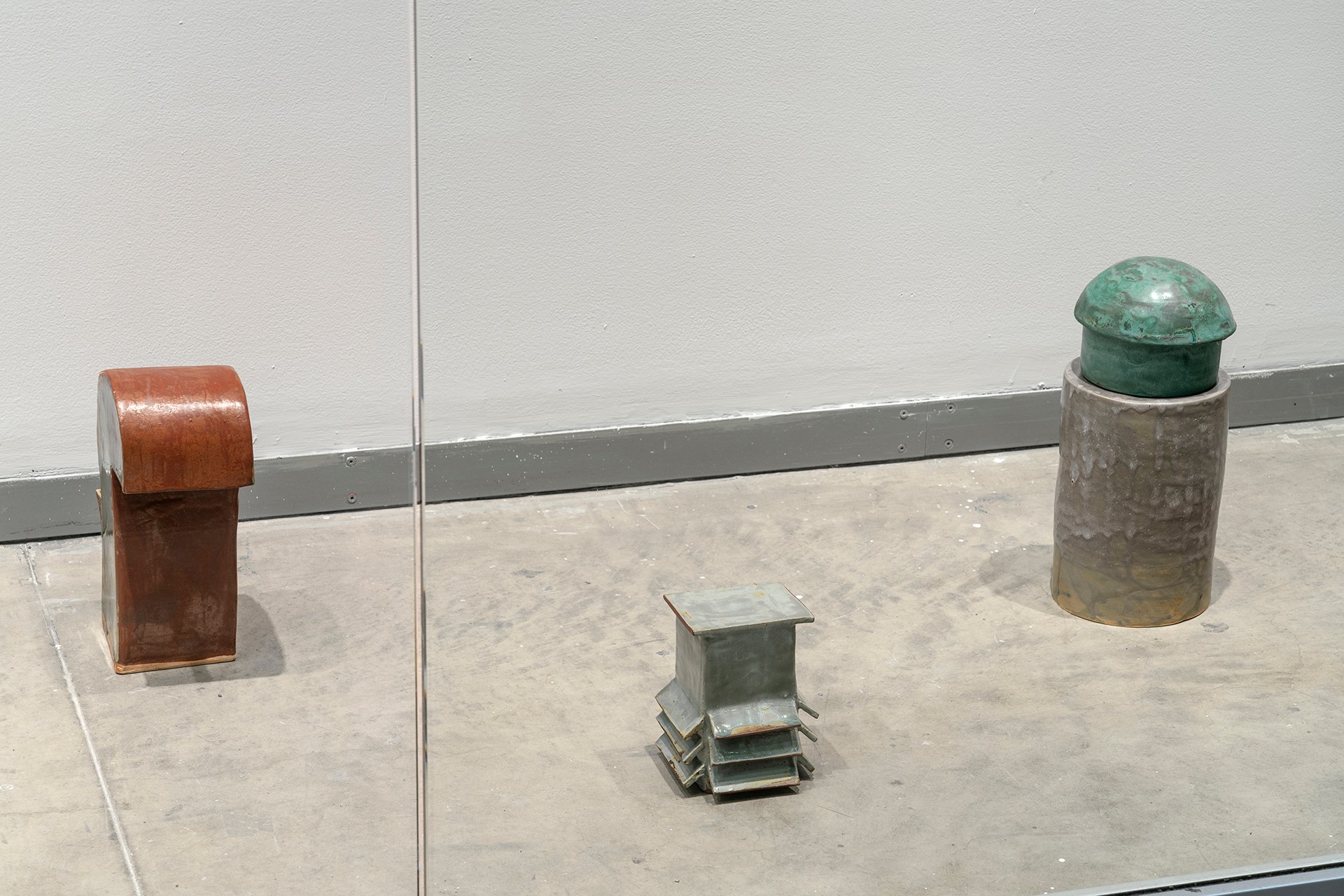 Photo by Guy L'Heureux
Photo by Guy L'Heureux

